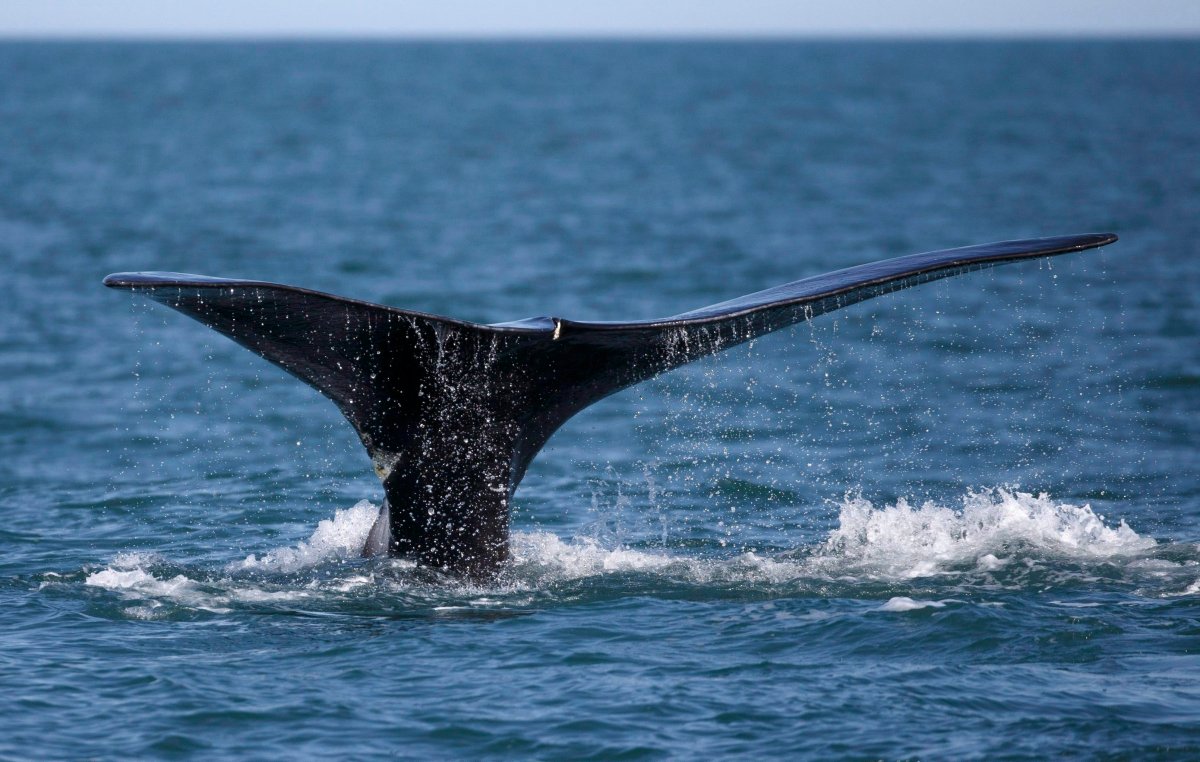Since the beginning of the year, six North Atlantic right whales have died in Canadian waters.

The deaths have been devastating to researchers, who, at the beginning of the year, forecast a small “baby boom” off the southern U.S. coast, where many whales travel during cold Canadian winters before returning to the Gulf of St. Lawrence.
WATCH: New study indicates human activity causing right whale to die off

The right whale is one of the largest mammals in the sea, but it is among the most at risk. The mammal is listed as endangered by Fisheries and Oceans Canada, and only around 400 remain.
The sudden spate of deaths this year is a stark contrast to 2018 when there were none recorded in Canadian waters. In 2017, a total of 12 whales died in the gulf. Officials said most of the deaths were caused by boats or fishing gear.
Some experts believe the deaths happening this year are far from over.
As concern swirls near the St. Lawrence, here’s what we know so far.
Canada makes moves to protect right whales in 2017-18
The federal government imposed new measures to protect right whales after 12 died in 2017.
The North Atlantic right whale plan ushered in the first mandatory speed limit reduction for vessels travelling in the western part of the Gulf of St. Lawrence. Previously, there was a voluntary speed reduction in the area.
The government ordered larger-sized vessels to slow down by 10 knots or face fines. The government hoped that lower speeds would reduce the number of collisions with right whales.
The plan built on the Oceans Protection Plan, which was set out in 2016.
In 2018, the speed restriction was lifted, but the government made moves to protect whales in other ways.
Fisheries were the first to see restrictions as the government adjusted fishing times for crab and lobster seasons. The amount of rope left on the water’s surface by fisheries was reduced to 3.7 metres to prevent the whales from getting tangled. In the past, “metres and metres of rope” had been allowed to skim the surface, according to the then-minister of fisheries and oceans.
A 100-metre buffer zone between boats and whales was implemented, and the government started conducting aerial surveillance of the gulf and using underwater listening devices to help track the mammals.
The speed restrictions lasted through part of 2018 and led some cruise ships to cancel trips to the area.
But Canada’s waters went without a single right whale death throughout 2018, leading the government to believe its measures were working.
Six whales dead in 2019
The current spate of whale deaths in the Gulf of St. Lawrence started in June.
Wolverine, a nine-year-old male, was discovered in the gulf on June 4 and is believed to be the first to have died.
On June 20, a female known as Punctuation was found floating off the Magdalen Islands. Researchers have been studying 40-year-old Punctuation for many years.
Four days later, two other whales were found dead near the Acadian Peninsula in New Brunswick: Comet, a 33-year-old male, and an unnamed 11-year-old female.
A fifth whale was confirmed dead on Thursday, this time spotted on the shore of Anticosti Island in Quebec. The same day, another deceased whale was seen during aerial surveillance off the Gaspé Peninsula.
How did they die?
The official causes of death for all six of the whales are still under investigation.
Necropsies are being carried out on all of them by experts and veterinarians.
The Department of Fisheries and Oceans said so far there is no evidence of injury on Wolverine, the first whale to die, by fishing gear or vessels. The necropsy is being done by experts from the universities of Prince Edward Island and Montreal.
Punctuation was towed to Cape Breton not long after she was discovered by an aerial surveillance team near the Magdalen Islands. The DFO said preliminary findings from her necropsy are “compatible” with a death caused by “sharp trauma, consistent with (a) vessel strike.”
The DFO is still determining the next steps for the pair of whales found earlier this week.
Meanwhile, scientists are collecting samples on the fifth whale to die and working out necropsy plans.
The agency said it’s also assessing options for recovering and conducting a necropsy on the sixth animal.
The results of all the necropsies are expected to be released in full in the coming months.
WATCH (February 2019): Trudeau eases restrictions aimed at protecting right whales

What has Canada done?
In February, Ottawa revamped rules laid out last year, in part to reduce the impact they were causing on cruise ships and fisheries.
One of the measures included reintroducing mandatory speed restrictions for large vessels in the western portion of the gulf.
But, in response to the fifth right whale death, Transport Canada announced on Wednesday it would implement a speed restriction to both the western portion and the shipping lanes in the gulf. The rule applies to vessels of 20 metres or more in length that travel in the shipping lanes north and south of Anticosti Island in the western Gulf of St. Lawrence.
The boats are restricted to 10 knots, effective immediately.
Transport Minister Marc Garneau said the limit is an interim measure but that tough fines — as high as $25,000 — are ready for those who break it.
The measure is in addition to a fixed speed restriction put in place back in April for a larger area of the gulf for the same size ships.
“In addition, our government has taken steps to protect Canada’s marine environment through a $1.5-billion investment in the Oceans Protection Plan,” Garneau said in a statement Wednesday.
“As part of the plan to protect marine mammals from the effects of shipping, including collisions and noise pollution, researchers are working to locate and track marine mammals in high vessel traffic areas and provide this information to mariners.”
—With files from the Canadian Press




Comments